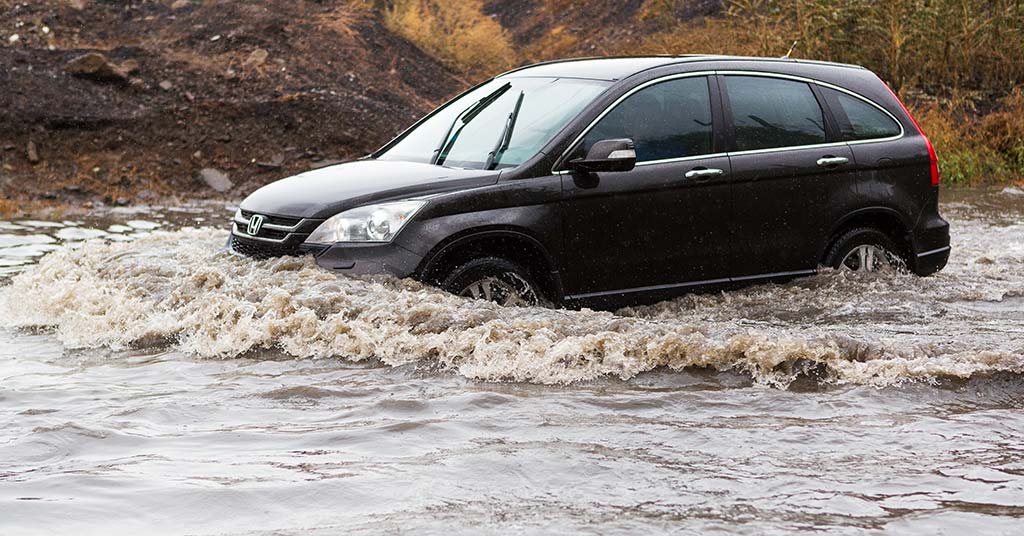
Flooding is common in certain parts of South Africa, with sudden rainfall resulting in flash floods and standing water on our roads.
It’s always best to avoid flooded areas completely, but sometimes driving in flood conditions is unavoidable. We offer some precautions for if you’re forced to drive through floodwater and what car parts to check afterwards.
Tips for driving in flood conditions
Bear in mind that driving through water can be exceptionally dangerous. Moving floodwater that is deeper than 30 cm can be powerful enough to shift a car. Even still, shallow water may hide obstacles that have been washed onto the road.
The best course of action is always to take a detour, to avoid that water.
However, if there is no alternative, follow these tips to get through safely:
- make sure there is no more than 15 cm of standing water or 10 cm of moving water
- enter the water at roughly 2 to 3 kph
- accelerate up to 5 or 6 kph to create a bow wave and keep water out of the engine
- stay in first gear and keep the revs up
- stay on the crown of the road
- when you emerge from the water, dry the brakes by using them gently.
What to have checked after driving through deep water
More modern engines aren’t quite as susceptible as older models to taking on water. However, it’s still important to check your engine after driving through water, even if it was only for a short time.
Even if nothing appears to be amiss and your car runs fine, it’s a good idea to have a mechanic check things out.
Brakes
Brakes can lose their grip after being submerged in water. After emerging from the water, drive slowly and tap your brakes a few times. Continue to drive cautiously to make sure that the pads and rotors/drums have time to dry.
Engine
As you’re driving, pay attention to any changes in how your engine runs. Any unusual noises, a sudden loss of power or jitteriness can point to issues caused by the water. Water doesn’t compress, so any water in the combustion chamber can cause hydrolock, which can lead to broken piston rods.
Oil
Check your oil dipstick for any signs of water. If the oil looks milky or there are small droplets on the dipstick, it has water in it. If there is water present, call a tow truck instead of trying to drive on to avoid engine damage.
Air filter
If your air filter is wet then water has entered through the air intake. If this is the case, don’t keep driving, you’ll only damage your engine more. Rather have your car towed to a mechanic.
Electrical
Modern cars tend to have a lot more electrics and even computers on board. It’s a good idea to check your computer box to see if it got wet. If your fuses aren’t wet, you can also check if your lights and indicators work. If in doubt, disconnect your battery and call a tow truck.
Interior
Check your carpets and seats for water damage. Leaving them wet for too long will encourage mould. Also, check your spare tyre well and make sure there no water trapped there that could cause rust.
Spare parts from Masterparts
Masterparts offers a comprehensive range of automotive spares, parts and components. We stock thousands of parts, for almost all vehicle makes and models on South African roads.




